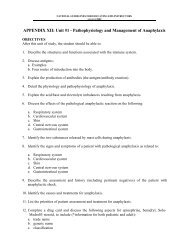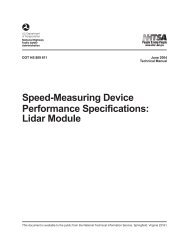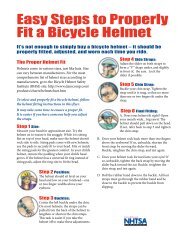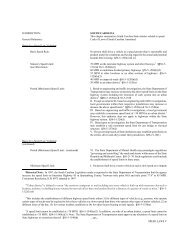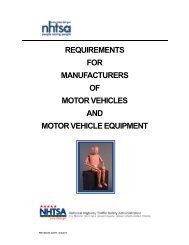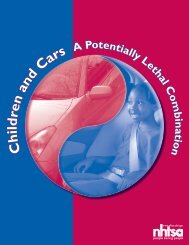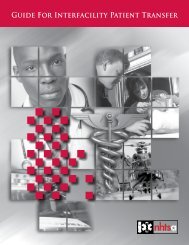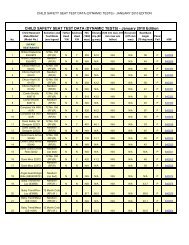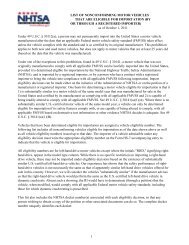Standard Practice for Emergency Medical Dispatch ... - NHTSA
Standard Practice for Emergency Medical Dispatch ... - NHTSA
Standard Practice for Emergency Medical Dispatch ... - NHTSA
You also want an ePaper? Increase the reach of your titles
YUMPU automatically turns print PDFs into web optimized ePapers that Google loves.
emergency medical dispatchers (EMD's) in the prehospital care of patients with<br />
symptoms and signs of an AMI, as well as patients with cardiac arrest, is the<br />
underlying assumption of this paper.<br />
Thus, while emergency medical dispatching is a broader topic than AMI and cardiac<br />
arrest, this paper represents a consensus of its potential contribution to the seamless<br />
prehospital identification and treatment of patients with AMI, including cardiac<br />
arrest, as well as a consensus of the critical issues and recommendations <strong>for</strong> medical<br />
dispatch protocols, processes, training and certification, and quality control and<br />
improvement.<br />
Nevertheless, it should be noted that there is a paucity of research related to<br />
outcomes associated with emergency medical dispatching. Only through evaluation<br />
research can the optimal EMD processes and protocols, associated with specified<br />
outcomes, be elucidated.<br />
INTRODUCTION TO EMERGENCY MEDICAL DISPATCHING<br />
Claude Lenfant,<br />
M.D. Director National Heart, Lung, and Blood Institute<br />
The American Heart Association (AHA) has proposed the concept of a '"chain of<br />
survival" <strong>for</strong> victims of cardiac arrest. The chain of survival includes four links, each<br />
of which must be robust to ensure maximum survival rates. The components of the<br />
chain are:<br />
1. Early access to the emergency medical services (EMS) system<br />
2. Early cardiopulmonary resuscitation (CPR), either by bystanders or first-responder<br />
rescuers<br />
3. Early defibrillation by first responders, emergency medical technicians, or<br />
paramedics<br />
4. Early advanced life support.<br />
Although the chain of survival was initially conceptualized <strong>for</strong> cardiac arrest victims,<br />
patients with an acute myocardial infarction (AMI) also benefit from the chain-ofsurvival<br />
approach to emergency cardiac care in the community.<br />
The first link of the chain of survival (early access) encompasses several major<br />
actions that must occur rapidly. Among these are recognition of the symptoms and<br />
signs of the AMI by the patient and bystanders, notification of the EMS system (often<br />
by use of the 9-1-1 emergency telephone number), recognition of a cardiac<br />
emergency by the medical dispatcher, and activation of available EMS responders.<br />
Each action is a part of the early access link.<br />
During the past 15 years, the public has been educated to use the 9-1-1 emergency<br />
telephone number to summon help <strong>for</strong> a range of emergencies, from minor problems<br />
to life-threatening conditions. The value of the 9-1-1 system is probably increased if<br />
there is a qualified professional -- the emergency medical dispatcher (EMD) -- to<br />
process emergency medical calls.<br />
An EMD is a trained public safety telecommunicator with the additional training and<br />
specific emergency medical knowledge essential <strong>for</strong> the efficient management of<br />
processing 9-1-1 calls and other emergency medical communications. EMD's can<br />
per<strong>for</strong>m some important functions that may enhance the efficiency and effectiveness<br />
75



